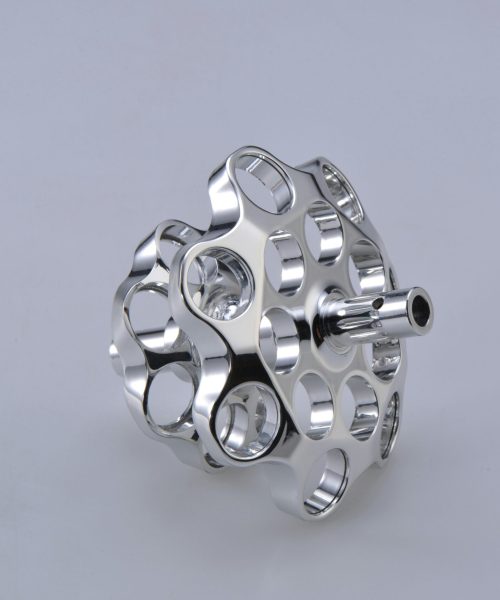In today’s industrial landscape, precision machining plays a pivotal role in manufacturing intricate components with unparalleled accuracy and efficiency. This guide explores the intricacies of CNC precision machining services, highlighting its methods, benefits, applications, and the critical role it plays across various industries.

Introduction to CNC Precision Machining
Precision machining is a specialized manufacturing process that utilizes computer-controlled machines to produce highly detailed parts with tight tolerances. CNC (Computer Numerical Control) precision machining takes this a step further by automating the machining process, enhancing accuracy, repeatability, and efficiency. This section delves into the fundamentals of CNC precision machining, its tools, and the technologies driving its advancements.

What is CNC Precision Machining?
CNC precision machining involves the use of computer-controlled machines to remove material from a workpiece to create intricate parts and components. Unlike conventional machining methods that rely on manual operation, CNC machines operate with precision based on digital instructions, ensuring consistent quality and adherence to design specifications.
Tools and Technologies in CNC Precision Machining
The core components of CNC precision machining include:
- 数控机床: These machines are equipped with motors that control the movement of cutting tools along multiple axes, allowing for precise and complex machining operations.
- Cutting Tools: High-quality cutting tools such as drills, end mills, and lathes are essential for shaping materials like metals, plastics, and composites with accuracy.
- CAD/CAM Software: Computer-Aided Design (CAD) software is used to create digital models of parts, while Computer-Aided Manufacturing (CAM) software converts these models into instructions that CNC machines can execute.

Methods and Processes in CNC Precision Machining
CNC precision machining encompasses various methods tailored to meet specific design requirements and material properties. The following are some of the primary methods used in CNC precision machining:

数控铣床
CNC milling machines utilize rotary cutters to remove material from a workpiece. These machines can perform operations in different directions and angles, making them versatile for producing complex shapes and features.
数控车削
In CNC turning, the workpiece rotates on a spindle while a cutting tool moves parallel to the axis of rotation to remove material. This method is ideal for creating cylindrical parts such as shafts and bushings.

CNC Grinding
Precision grinding involves using abrasive wheels to remove small amounts of material from a workpiece, achieving high surface quality and dimensional accuracy. It is crucial for applications requiring fine finishes and tight tolerances.
放电加工(EDM)
EDM utilizes electrical discharges to erode material from a workpiece, allowing for precise shaping of conductive materials such as hardened steel and titanium. This method is particularly useful for intricate geometries and hard-to-machine materials.
多轴加工
Multi-axis CNC machines can move cutting tools along four or more axes simultaneously, enabling the production of highly complex parts with minimal setup changes. This method is essential for aerospace, automotive, and medical industries.
Advantages of CNC Precision Machining
The adoption of CNC precision machining offers numerous advantages over traditional machining methods, making it indispensable in modern manufacturing environments. Here are some key benefits:

Enhanced Accuracy and Repeatability
数控机床以微米级的精度运行,确保生产的每个零件都能重复满足精确的尺寸规格。这种一致性降低了变异性,提高了产品质量。
Increased Productivity and Efficiency
与手工操作相比,数控加工自动化可加快加工周期,提高产量。效率的提高可缩短交货时间,提高生产能力。
Versatility in Material Compatibility
数控精密加工支持多种材料,包括金属(铝、不锈钢、钛)、塑料(ABS、POM)和复合材料。这种多功能性使其适用于各种工业应用。
Complex Geometry Capability
凭借多轴加工能力,数控机床可以加工出复杂的几何形状和特征,而这些是传统加工方法难以实现或无法实现的。这种能力对于创新产品设计至关重要。
成本效益
尽管初始设置成本较高,但数控精密加工可通过减少废品、降低劳动力成本和减少二次加工需求来长期节约成本。它能优化资源利用率,提高盈利能力。
Applications of CNC Precision Machining
The versatility and precision of CNC machining find applications across various industries, where the demand for high-quality, custom parts is paramount. This section explores key sectors benefiting from CNC precision machining services.
航空航天工业
In aerospace manufacturing, precision and reliability are non-negotiable. CNC machining is used to produce critical components such as turbine blades, engine parts, and structural components with stringent tolerances and material specifications.

汽车制造
The automotive sector relies on CNC precision machining for producing engine components, transmission parts, and chassis components. CNC machines ensure parts meet durability, performance, and safety standards required in modern vehicles.
Medical Device Manufacturing
Precision machining is vital for fabricating medical devices and equipment with intricate designs and biocompatible materials. CNC machines enable the production of surgical instruments, implants, and diagnostic tools with high precision and cleanliness standards.
Electronics and Semiconductor Industry
In electronics manufacturing, CNC machining is employed to create components for consumer electronics, semiconductors, and telecommunications equipment. The precision and consistency of CNC machining ensure reliability and functionality in electronic products.
Defense and Military Applications
Military and defense sectors utilize CNC precision machining for manufacturing components used in weaponry, radar systems, and armored vehicles. The durability, accuracy, and strict adherence to specifications make CNC machining indispensable in defense applications.
可再生能源部门
风力涡轮机、太阳能电池板和储能系统等可再生能源技术的部件需要精密加工,以确保效率和使用寿命。数控加工支持生产对可再生能源基础设施至关重要的高性能部件。
Choosing a CNC Precision Machining Service Provider
Selecting the right CNC precision machining service provider is crucial for achieving optimal manufacturing outcomes. Consider the following factors when choosing a machining partner:
Expertise and Experience
寻找一家在数控精密加工方面拥有丰富经验,并在不同行业提供高质量零件方面拥有良好记录的供应商。具备处理复杂几何形状和材料的专业知识更有优势。

Technological Capabilities
评估供应商的加工能力,包括数控机床的类型、多轴能力和 CAD/CAM 软件的熟练程度。先进的技术可实现高效生产并严格控制公差。
Quality Assurance Standards
确保加工供应商遵守严格的质量控制措施和 ISO 9001 等认证。质量保证流程可降低缺陷风险,确保每个零件都符合特定要求。
定制和灵活性
选择一个能够满足定制要求和快速原型需求的加工合作伙伴。生产量和时间安排的灵活性可确保对波动的需求和项目时间表做出快速反应。
Value-added Services
评估机械加工供应商提供的其他服务,如精加工、装配和后勤支持。综合服务可简化供应链,提高整体项目效率。
结论
数控精密加工服务代表着卓越制造的顶峰,它将先进技术与精湛工艺相结合,提供卓越的零部件。随着各行各业的不断发展,对制造工艺的精确性、可靠性和创新性的要求只会越来越高。通过利用数控精密加工,企业可以提高运营效率,加快产品上市速度,并在以质量和精度为导向的全球市场中保持竞争优势。
总之,将数控精密加工服务集成到制造操作中,可使各行业突破极限,推动创新,塑造全球制造业的未来。








